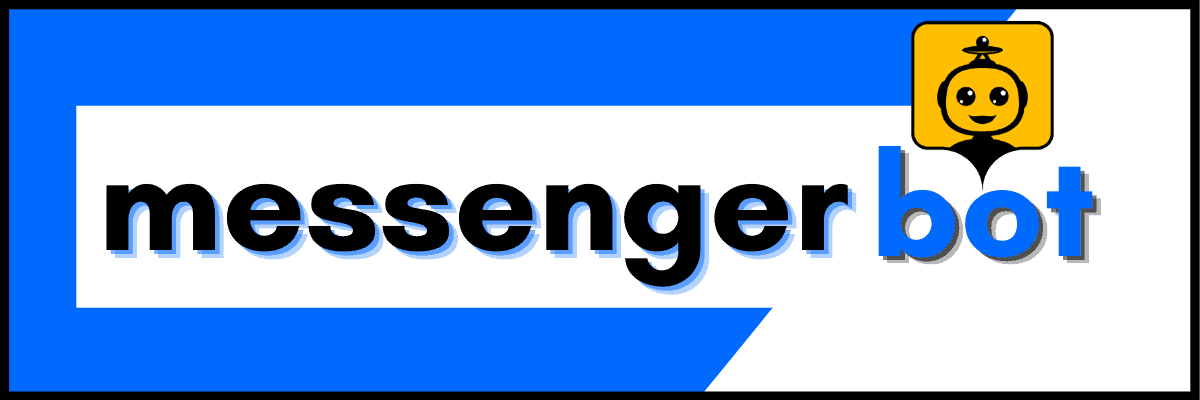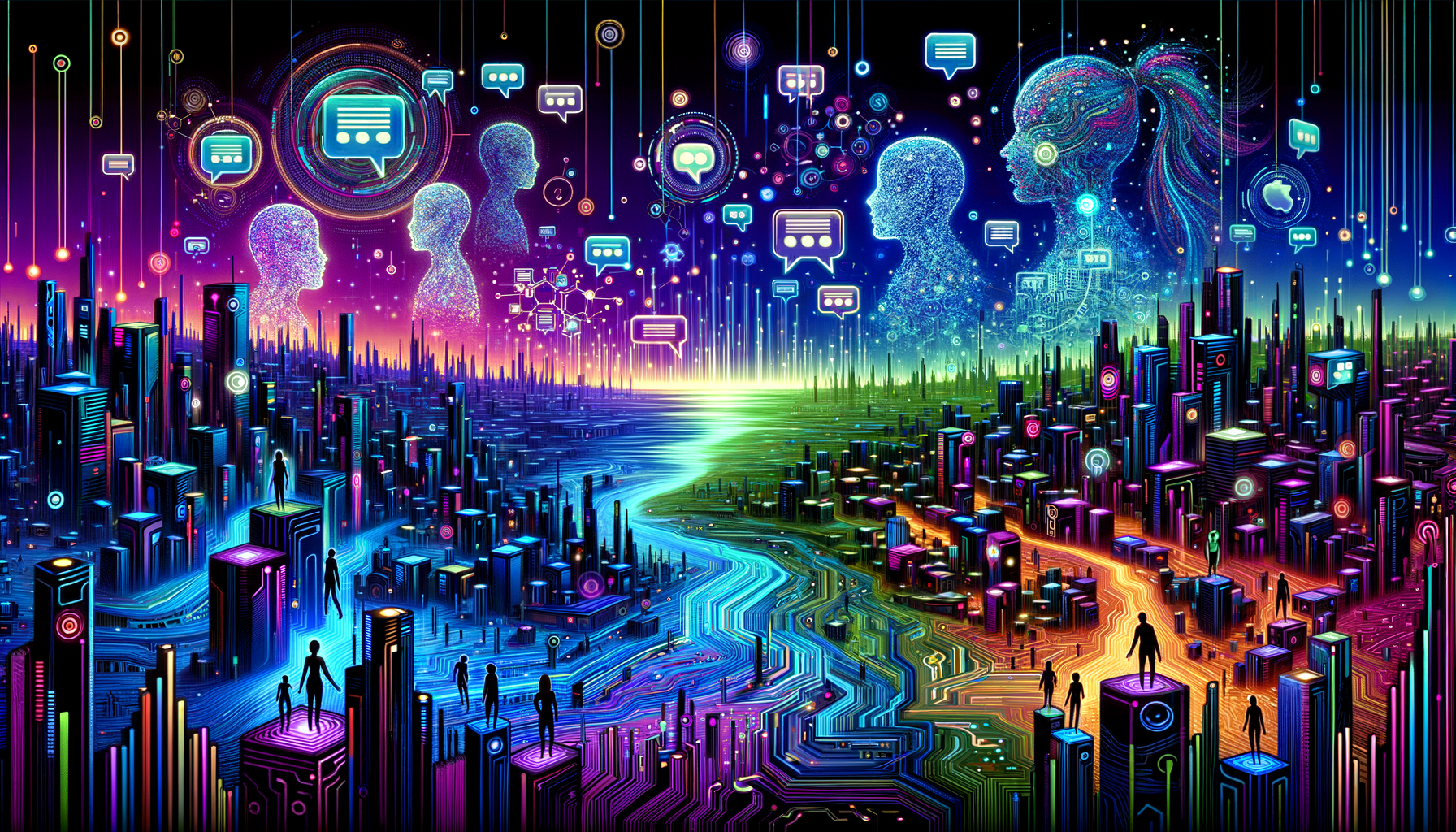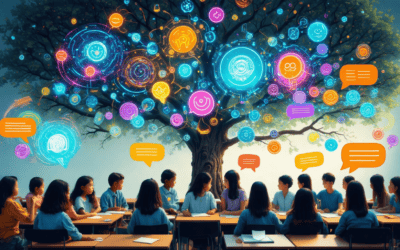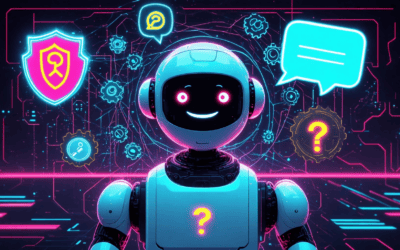In today’s digital landscape, chatbots have become indispensable tools for businesses seeking to enhance customer engagement and streamline operations. From free AI-powered solutions to advanced chatbot options, the market offers a diverse array of choices to suit various needs and budgets. This comprehensive guide explores the top chatbot options available, delving into the four types of chatbots, comparing AI-driven alternatives to ChatGPT, and examining both free and premium solutions. Whether you’re a small business owner looking for cost-effective chatbot options or an enterprise seeking cutting-edge AI technology, we’ll help you navigate the world of chatbots to find the perfect fit for your organization.
Exploring the World of Chatbots
In today’s digital landscape, chatbots have become an integral part of customer engagement strategies. As an AI-powered platform, we at Messenger Bot understand the importance of leveraging advanced NLP techniques to create chatbots that not only enhance SEO rankings but also provide substantial value to users. Let’s dive into the fascinating world of chatbots and explore their various types and functionalities.
What are the four types of chatbots?
Chatbots come in various forms, each designed to serve specific purposes and cater to different user needs. Here are the four main types of chatbots:
- Rule-Based Chatbots: These are the simplest form of chatbots, operating on a set of predefined rules. They can answer straightforward questions but lack the ability to understand context or handle complex queries.
- AI-Powered Chatbots: Utilizing advanced Natural Language Processing and machine learning algorithms, these chatbots can understand context, learn from interactions, and provide more personalized responses.
- Hybrid Chatbots: Combining the best of both worlds, hybrid chatbots use rule-based systems for simple queries and AI for more complex interactions, offering a balance between efficiency and intelligence.
- Voice-Enabled Chatbots: These chatbots use speech recognition technology to interact with users through voice commands, making them ideal for hands-free environments and accessibility purposes.
At Messenger Bot, we specialize in AI-powered chatbots that can significantly improve customer engagement across various platforms. Our advanced NLP capabilities ensure that businesses can create chatbots that not only understand user intent but also provide relevant and valuable responses.
Understanding chatbot functionality and applications
Chatbots have revolutionized the way businesses interact with their customers, offering a wide range of functionalities and applications across various industries. Here’s a closer look at how chatbots function and where they can be applied:
Chatbot Functionality:
- Natural Language Processing: Chatbots use NLP to understand and interpret user input, allowing for more natural conversations.
- Machine Learning: Advanced chatbots continuously learn from interactions, improving their responses over time.
- Integration Capabilities: Chatbots can integrate with various systems, such as CRM platforms and databases, to access and provide relevant information.
- Multi-Channel Support: Modern chatbots can operate across multiple platforms, including websites, social media, and messaging apps.
Applications of Chatbots:
- Customer Support: Chatbots can handle basic inquiries, freeing up human agents for more complex issues.
- Lead Generation: By engaging website visitors and qualifying leads, chatbots can significantly boost lead generation efforts.
- E-commerce: Chatbots can assist with product recommendations, order tracking, and even process transactions.
- Healthcare: In the medical field, chatbots can help with appointment scheduling, symptom checking, and providing basic health information.
- HR and Recruitment: Chatbots streamline the recruitment process by handling initial screenings and answering candidate queries.
As the demand for efficient customer engagement grows, platforms like Brain Pod AI are also contributing to the chatbot ecosystem with their innovative AI solutions. However, at Messenger Bot, we pride ourselves on offering a comprehensive suite of chatbot features that cater to diverse business needs, from automated responses to advanced workflow automation.
By understanding the different types of chatbots and their functionalities, businesses can make informed decisions about implementing these AI-driven tools to enhance their customer engagement strategies and optimize their SEO efforts.

Comparing AI Chatbots
At Messenger Bot, we’re always striving to provide the best AI-powered chatbot solutions for our customers. While we believe our platform offers exceptional capabilities, it’s important to explore the broader landscape of AI chatbots to understand the various options available.
Is there a better AI than ChatGPT?
The question of whether there’s a “better” AI than ChatGPT is complex and depends on specific use cases. ChatGPT, developed by OpenAI, has certainly made waves in the AI community with its impressive natural language processing capabilities. However, several other AI models and chatbots offer unique features that may be more suitable for certain applications.
For instance, Anthropic’s Claude has gained attention for its ability to handle longer conversations and its focus on ethical AI development. Google’s Bard leverages the tech giant’s vast knowledge base and integrates well with other Google services. Meanwhile, our own Messenger Bot platform excels in providing tailored customer service solutions with advanced automation workflows.
It’s worth noting that “better” is subjective and depends on your specific needs. While ChatGPT might excel in general conversation and content generation, other AIs might be more adept at specialized tasks like data analysis or language translation.
Evaluating ChatGPT alternatives and competitors
When evaluating ChatGPT alternatives and competitors, it’s crucial to consider factors such as specialization, integration capabilities, and scalability. Here’s a brief overview of some notable options:
1. Messenger Bot: Our platform offers advanced automation features, multilingual support, and seamless integration with popular messaging platforms, making it ideal for businesses looking to enhance their customer engagement strategies.
2. IBM Watson: Known for its strong natural language processing capabilities and integration with IBM’s suite of business tools.
3. Microsoft Bot Framework: Offers robust development tools and seamless integration with Microsoft’s ecosystem.
4. Brain Pod AI: Provides a comprehensive suite of AI tools, including a powerful AI writer and image generator, catering to various content creation needs.
5. Rasa: An open-source platform that allows for highly customizable chatbot development.
When choosing an AI chatbot solution, consider factors such as ease of use, customization options, and integration capabilities with your existing systems. At Messenger Bot, we pride ourselves on offering a versatile platform that can be tailored to meet diverse business needs while maintaining a user-friendly interface.
It’s also crucial to evaluate the AI-driven chatbot optimization capabilities of each platform. This ensures that your chatbot can continuously improve its performance based on user interactions and feedback.
Remember, the best chatbot for your business will depend on your specific requirements, budget, and the level of technical expertise available within your team. We recommend thoroughly researching and possibly trialing different options before making a decision. If you’re interested in exploring how Messenger Bot can meet your needs, we invite you to try our free trial and experience the power of our AI-driven customer interaction tools firsthand.
III. Top Chatbot Options for Various Needs
When it comes to chatbot options, the market offers a diverse range of solutions catering to different business needs and objectives. As an AI-powered platform, I’ve observed the evolving landscape of chatbot technologies and their impact on customer engagement strategies. The key to selecting the right chatbot lies in understanding your specific requirements and aligning them with the features and capabilities offered by various platforms.
A. Which chatbot is best?
Determining the “best” chatbot depends on your unique business goals, budget, and technical requirements. However, some standout options have emerged in the industry:
1. Messenger Bot: Our platform excels in providing a comprehensive solution for businesses looking to automate their customer interactions across multiple channels. With advanced AI capabilities and seamless integration options, Messenger Bot offers a robust set of features for creating dynamic, personalized chatbot experiences.
2. Dialogflow: Google’s chatbot platform is known for its natural language processing capabilities and integration with Google Cloud services. It’s particularly suitable for businesses already invested in the Google ecosystem.
3. ManyChat: This platform specializes in creating chatbots for Facebook Messenger and Instagram, making it an excellent choice for businesses focusing on social media engagement.
4. Brain Pod AI: Offering a versatile multilingual AI chat assistant, Brain Pod AI provides advanced natural language processing capabilities for businesses seeking sophisticated chatbot solutions.
B. Analyzing features and capabilities of leading chatbots
To make an informed decision, it’s crucial to analyze the features and capabilities of leading chatbots:
1. Natural Language Processing (NLP): Advanced NLP capabilities allow chatbots to understand and respond to user queries more accurately. Platforms like Messenger Bot and Brain Pod AI leverage cutting-edge NLP technologies to provide more human-like interactions.
2. Multi-channel support: The ability to deploy chatbots across various platforms (website, social media, messaging apps) is essential for creating a cohesive customer experience. Our Messenger Bot features include multi-channel support, allowing businesses to engage customers wherever they are.
3. Customization and scalability: Look for platforms that offer flexible customization options and can scale with your business growth. This ensures that your chatbot solution can adapt to changing needs and maintain optimal performance.
4. Integration capabilities: Seamless integration with existing business systems (CRM, e-commerce platforms, etc.) is crucial for maximizing the efficiency of your chatbot. Messenger Bot offers robust integration options to streamline your workflows.
5. Analytics and reporting: Comprehensive analytics tools help you measure the performance of your chatbot and make data-driven improvements. Our platform provides detailed insights into user interactions and engagement metrics.
6. Multilingual support: For businesses with a global audience, the ability to communicate in multiple languages is invaluable. Brain Pod AI’s multilingual capabilities and Messenger Bot’s language support features cater to this need effectively.
By carefully evaluating these features and aligning them with your specific requirements, you can select a chatbot solution that not only meets your current needs but also positions your business for future growth and enhanced customer engagement.
Free AI Chatbot Solutions
As businesses seek to enhance customer engagement and streamline operations, the demand for cost-effective chatbot options has surged. We’ve explored various chatbot options and discovered that free AI chatbots can be powerful tools for brands looking to dip their toes into automated customer interactions without breaking the bank.
Is there a free AI chatbot?
Yes, there are several free AI chatbot solutions available in the market. These options range from basic rule-based chatbots to more advanced AI-powered conversational agents. Some popular free chatbot platforms include:
- MobileMonkey: Offers a free plan with basic features for Facebook Messenger bots.
- Chatfuel: Provides a free tier for creating chatbots on Facebook Messenger and Instagram.
- Dialogflow: Google’s natural language processing platform offers a free tier for building conversational interfaces.
- Messenger Bot: While not entirely free, we offer a comprehensive free trial that allows businesses to experience advanced AI chatbot capabilities.
These free options can be excellent starting points for businesses looking to implement chatbot technology without initial investment. However, it’s important to note that free versions often come with limitations in terms of features, customization, and the number of interactions.
Exploring cost-effective chatbot options for businesses
When considering cost-effective chatbot solutions, businesses should look beyond just the price tag. Here are some factors to consider:
- Scalability: Choose a solution that can grow with your business needs.
- Integration capabilities: Ensure the chatbot can integrate seamlessly with your existing systems and customer service platforms.
- Customization: Look for platforms that allow you to tailor the chatbot’s personality and responses to align with your brand voice.
- Analytics: Opt for solutions that provide detailed insights into chatbot performance and user interactions.
- Multilingual support: If you serve a global audience, consider chatbots with multilingual capabilities.
While free options can be a good starting point, investing in a more robust solution like Messenger Bot can provide advanced features such as Natural Language Processing (NLP) and machine learning capabilities. These advanced technologies enable more sophisticated interactions, leading to improved customer engagement and satisfaction.
For businesses looking to maximize their ROI, it’s crucial to balance the initial cost with the long-term benefits of a more capable AI chatbot. By leveraging the right chatbot solution, companies can significantly enhance their customer service, streamline operations, and drive growth in an increasingly digital marketplace.

V. Comprehensive Chatbot Options List
As the demand for efficient customer engagement solutions grows, a wide array of chatbot options has emerged to cater to various business needs and budgets. Our comprehensive list explores both free and premium chatbot solutions, helping you find the perfect fit for your customer interaction strategy.
A. Free chatbot options for budget-conscious users
For businesses looking to dip their toes into the world of AI-powered customer service without a significant financial investment, several free chatbot options offer impressive functionality:
- MobileMonkey: This platform provides a free plan that includes Facebook Messenger bot creation, allowing businesses to automate responses and engage customers on one of the most popular messaging platforms.
- Tidio: Offering a free plan with basic chatbot features, Tidio is an excellent starting point for small businesses looking to enhance their website’s customer support capabilities.
- ManyChat: With its user-friendly interface and free tier, ManyChat enables businesses to create simple chatbots for Facebook Messenger, ideal for automating common customer inquiries.
- Messenger Bot: Our platform offers a free trial that allows users to experience the power of AI-driven chatbots across multiple channels, including Facebook and Instagram.
These free options provide a solid foundation for businesses to explore the benefits of chatbot technology without committing to a paid solution. However, it’s important to note that free plans often come with limitations in terms of features, customization options, and the number of interactions allowed.
B. Premium chatbot solutions for advanced requirements
For businesses seeking more robust features, scalability, and advanced AI capabilities, premium chatbot solutions offer a wealth of options:
- Dialogflow: Google’s natural language processing platform enables developers to build sophisticated chatbots with advanced language understanding capabilities.
- IBM Watson Assistant: This enterprise-grade AI chatbot platform offers powerful natural language processing and machine learning capabilities for creating highly intelligent conversational interfaces.
- Intercom: Known for its customer messaging platform, Intercom’s chatbot solution integrates seamlessly with its suite of customer support tools, offering advanced features like lead qualification and personalized messaging.
- Brain Pod AI: This versatile AI platform offers a range of solutions, including an AI Chat Assistant that can be customized for various business needs, from customer support to lead generation.
Premium solutions often provide more advanced features such as multi-language support, deeper analytics, and seamless integration with CRM systems and other business tools. These capabilities allow for more sophisticated chatbot engagement strategies and can significantly enhance the overall customer experience.
When choosing between free and premium options, consider factors such as your business size, customer support volume, desired features, and long-term scalability needs. Many premium providers offer tiered pricing plans, allowing you to start with basic features and upgrade as your requirements grow.
By leveraging the right chatbot solution, businesses can dramatically improve their customer engagement, streamline support processes, and provide round-the-clock assistance. Whether you opt for a free or premium solution, the key is to select a chatbot that aligns with your business goals and enhances your overall customer service strategy.
VI. Chatsonic and Other Emerging Chatbot Technologies
As the landscape of AI-powered chatbots continues to evolve, Chatsonic has emerged as a notable player in the field. This innovative platform leverages advanced Natural Language Processing (NLP) techniques to deliver sophisticated conversational experiences. Let’s explore Chatsonic’s unique features and how it stacks up against other AI chatbots in the market.
A. Examining Chatsonic’s unique features and benefits
Chatsonic, developed by Writesonic, offers a range of capabilities that set it apart in the crowded chatbot market. One of its standout features is the ability to generate human-like responses across various content types, including articles, blog posts, and even product descriptions. This versatility makes it a valuable tool for content creators and marketers looking to streamline their workflow.
A key advantage of Chatsonic is its integration with current events and real-time information. Unlike some static chatbots, Chatsonic can access up-to-date data, allowing it to provide relevant and timely responses. This feature is particularly useful for businesses that need to stay on top of industry trends and news.
Moreover, Chatsonic boasts multilingual support, enabling businesses to engage with a global audience effectively. This aligns with the growing trend of multilingual chatbot integration, which is becoming increasingly important for international businesses.
B. Comparing Chatsonic to other AI-powered chatbots
When evaluating Chatsonic against other AI-powered chatbots, it’s essential to consider factors such as accuracy, versatility, and user experience. While Chatsonic excels in content generation and real-time information access, other chatbots may have different strengths.
For instance, ChatGPT, developed by OpenAI, is renowned for its broad knowledge base and ability to engage in complex conversations across various topics. However, it lacks the real-time information update feature that Chatsonic offers.
Another competitor in the space is Claude, created by Anthropic. Claude is known for its strong reasoning capabilities and ethical AI design. While it may not have the same content generation focus as Chatsonic, it excels in analytical tasks and providing detailed explanations.
For businesses looking for a more customizable solution, Messenger Bot offers a robust platform for creating tailored chatbot experiences. Our AI-powered chatbot can be seamlessly integrated into various messaging platforms, making it an excellent choice for businesses focusing on social media engagement and customer support automation.
When choosing between these options, it’s crucial to consider your specific needs. Chatsonic might be ideal for content creation and real-time information, while Messenger Bot could be the perfect fit for businesses seeking to enhance customer engagement through AI-driven chatbots.
As the field of AI continues to advance, we can expect these chatbot technologies to evolve further, offering even more sophisticated features and capabilities. The key for businesses is to stay informed about these developments and choose a solution that best aligns with their specific goals and requirements.
VII. Implementing Chatbots for Enhanced Customer Engagement
Implementing chatbots for enhanced customer engagement has become a crucial strategy for businesses looking to improve their customer service and overall user experience. By leveraging AI-powered chatbots, companies can provide instant, personalized responses to customer inquiries, streamline communication processes, and ultimately drive better engagement and satisfaction.
At Messenger Bot, we understand the importance of seamless chatbot integration and have developed advanced features to help businesses maximize their customer engagement potential. Our platform allows for easy implementation of chatbots across various channels, including websites, social media platforms, and messaging apps.
A. Integrating chatbots with existing business systems
Integrating chatbots with existing business systems is a critical step in creating a cohesive and efficient customer engagement strategy. This process involves connecting your chatbot to various tools and platforms your business already uses, such as customer relationship management (CRM) systems, e-commerce platforms, and support ticketing systems.
To effectively integrate chatbots with your existing business systems:
1. Identify integration points: Determine which systems and tools your chatbot needs to connect with to provide the most value to your customers and your business.
2. Use APIs and webhooks: Leverage application programming interfaces (APIs) and webhooks to enable seamless data exchange between your chatbot and other systems.
3. Ensure data consistency: Implement measures to maintain data consistency across all integrated systems, ensuring that customer information and interactions are accurately recorded and synchronized.
4. Implement security measures: Protect sensitive customer data by implementing robust security protocols and encryption methods for all integrations.
5. Test thoroughly: Conduct comprehensive testing to ensure that all integrations function correctly and provide a smooth user experience.
By integrating chatbots with existing business systems, companies can create a more unified and efficient customer engagement process. This integration allows for personalized interactions, faster response times, and improved overall customer satisfaction.
B. Measuring chatbot performance and ROI
Measuring chatbot performance and return on investment (ROI) is essential for understanding the impact of your chatbot implementation and identifying areas for improvement. By tracking key metrics and analyzing performance data, businesses can optimize their chatbot strategies and demonstrate the value of their investment.
To effectively measure chatbot performance and ROI:
1. Define key performance indicators (KPIs): Establish relevant KPIs such as customer satisfaction scores, response times, resolution rates, and conversion rates.
2. Implement analytics tools: Utilize analytics platforms to track and analyze chatbot interactions, user behavior, and performance metrics.
3. Monitor engagement metrics: Track metrics like user retention, session duration, and the number of messages exchanged to gauge user engagement levels.
4. Analyze conversation quality: Evaluate the quality of chatbot conversations by reviewing transcripts and identifying areas where the chatbot may be struggling or excelling.
5. Calculate cost savings: Determine the cost savings achieved through chatbot implementation by comparing it to traditional customer service methods.
6. Measure revenue impact: Assess the impact of chatbots on revenue generation by tracking conversions, upsells, and cross-sells facilitated by the chatbot.
7. Gather user feedback: Collect and analyze user feedback to gain insights into customer satisfaction and identify areas for improvement.
8. Conduct A/B testing: Perform A/B tests to compare different chatbot strategies and optimize performance based on the results.
By regularly measuring chatbot performance and ROI, businesses can make data-driven decisions to improve their chatbot implementation and maximize the benefits of this technology. This ongoing analysis ensures that chatbots continue to provide value to both the business and its customers.
At Messenger Bot, we offer comprehensive analytics and reporting tools to help businesses track and optimize their chatbot performance. Our platform provides detailed insights into user interactions, allowing companies to make informed decisions and continuously improve their customer engagement strategies.
To learn more about implementing chatbots for enhanced customer engagement and how Messenger Bot can help your business, sign up for our free trial and experience the power of AI-driven customer interactions firsthand.




